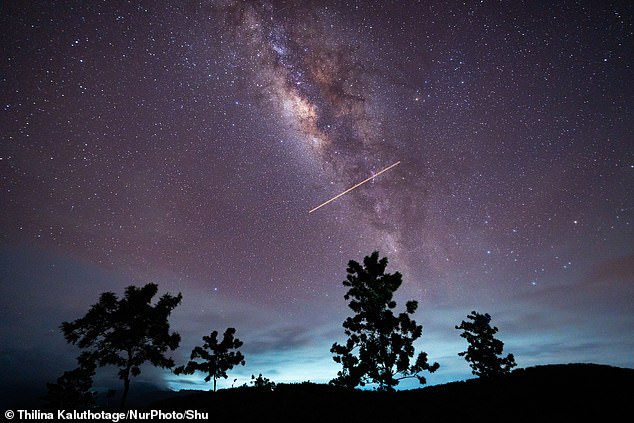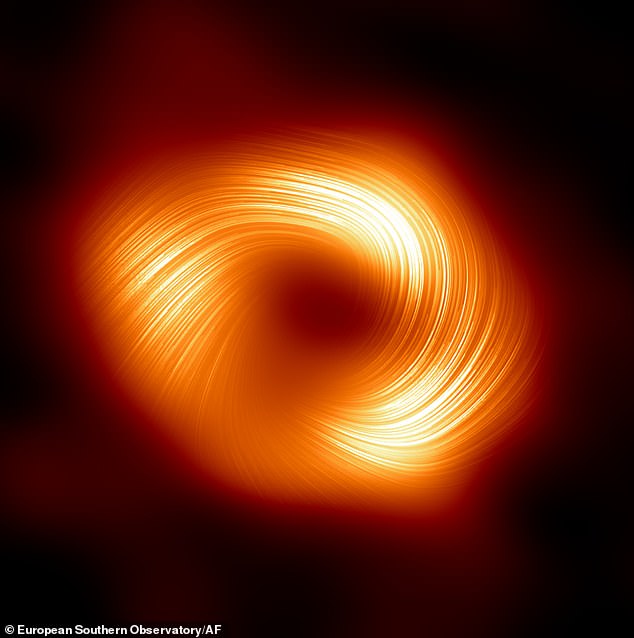I Worked at NASA – Here’s the Shocking Truth About Some of the Most Iconic Photos From Space (They’re NOT Real!)
Search the Internet for an image of the Milky Way and you’ll find dozens of photos showing our galaxy in all its glory.
But a former NASA space analyst has shared the ‘truth’ about the photos, revealing they are not real.
Alexandra Doten explains that until now, people have only seen images of what scientists think the Milky Way looks like.
According to Doten, taking a picture of our entire galaxy would mean sending a spacecraft beyond its edge, which may never be possible.
This image of the Milky Way may look like a real photograph, but it is actually just an illustration. It is impossible to photograph our home galaxy in its entirety with current technology.
“There is no single complete picture of the Milky Way, the galaxy we live in,” former NASA space analyst and science content creator Alexandra Doten revealed in a recent TikTok.
“Every full image you see of the Milky Way is an illustration. We can’t see the Milky Way this way, and I don’t think people ever will,” Doten said.
Doten is a science content creator and former NASA space analyst. In his role, he provided technical and policy support to the Space Communications and Navigation (SCaN) division at NASA Headquarters.
This year, she was named to Forbes’ 30 Under 30 list of social media influencers for her educational astronomy TikToks.
The Milky Way is a disk-shaped spiral galaxy that is a whopping 100,000 light-years wide (the equivalent of 600,000 trillion miles) and 1,000 light-years thick.
Our planet is located in a solar system that is approximately halfway between the center and the outer edge of the galaxy.
To photograph our own galaxy in its entirety, “a spacecraft would have to travel either up or down from the disk of the Milky Way — and very far,” Doten said.
That spacecraft would have to come far beyond the edge of our galaxy, a distance of at least 500 light years.
“But the furthest distance a spacecraft has ever traveled isn’t even to the nearest star,” Doten said.
The Voyager 1 spacecraft currently holds the record for the furthest distance ever traveled by a spacecraft. But that distance is just 0.002 light years from Earth.
So it is highly unlikely that a spaceship will be able to travel outside our galaxy within your lifetime.
But astronomers can still create accurate illustrations of what the Milky Way should look like based on what we can see from Earth, Doten explains.
The first clue that our galaxy is shaped like a spiral disk came simply by looking up.

The concentrated band of stars stretching across the sky was one of the first clues that we live in a disk-shaped spiral galaxy.
Astronomers suspected that the Milky Way is shaped like a flat disk, derived from the bright band of stars that stretches across the sky, which also gives our galaxy its name.
You’ve probably seen it if you’ve looked up at the sky on a very dark, clear night.
The fact that we can see this band from the Milky Way tells us that our galaxy is basically flat. It is also strong evidence that we live in a spiral galaxy.
If we lived in an elliptical galaxy, which is shaped like an oval, we would see stars spread out across the entire sky, rather than concentrated in a single band.
The shape of the Milky Way has also been confirmed by images taken by powerful telescopes, including Hubble, Chandra, Spitzer and James Webb.
These telescopes capture images of our galaxy in many different wavelengths of light, allowing astronomers to peer into the heart of the Milky Way.
“We even have a picture of the black hole at the center of the Milky Way,” Doten said.

Powerful telescopes allow astronomers to peer into the center of our galaxy and even take this picture of the supermassive black hole at the center: Sagittarius A.
Astronomers can also track the motions of stars orbiting this center and use our knowledge of gravity to build a model of what the core must look like.
This technique also showed that we live in a spiral galaxy. That is, it has a central bar of stars, gas and dust that connects the spiral arms to the core, the center.
And we’ve also learned a lot from taking pictures of other galaxies.
Telescopic images of spiral galaxies such as Andromeda, our nearest spiral neighbor, help illustrators visualize what the Milky Way likely looks like.
For example, these images show that most disk galaxies have spiral arms and a dense central bulge, so we can safely assume that this is also the case with us.
By combining all these observations, we can create very precise images of our galaxy, even though humans have never seen it in its entirety.
“It’s like sitting in the seat of a Ferris wheel and looking in and trying to draw the rest of the Ferris wheel,” Doten said.
‘Overall, you’ll do quite well.’
